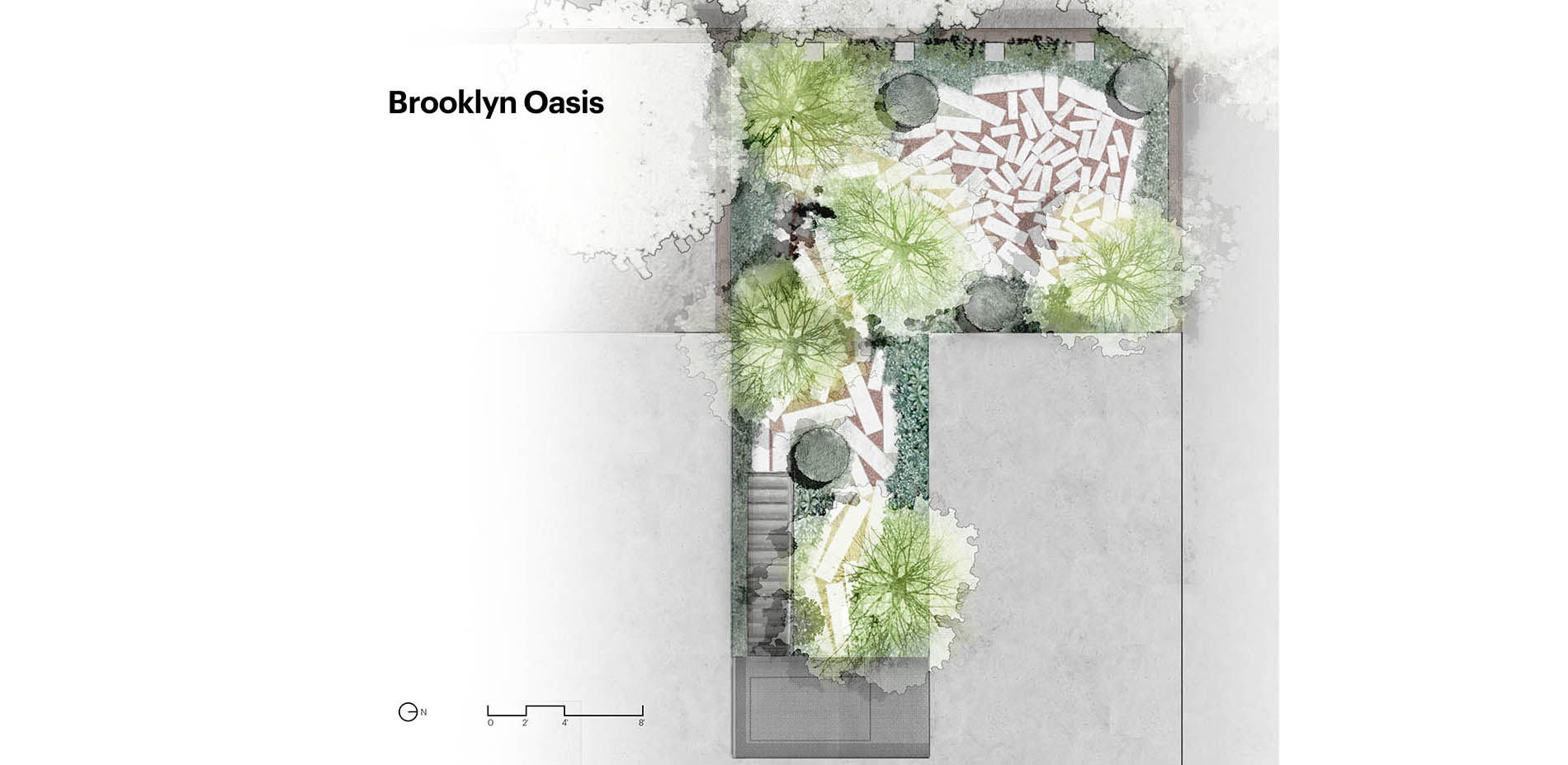
Brooklyn Oasis
Photo Credit: Michael Van Valkenburgh Associates, Inc.
Media: Please submit high-resolution image requests to images@asla.org.

Brooklyn Oasis Garden
Photo Credit: Alex MacLean
Media: Please submit high-resolution image requests to images@asla.org.
Brooklyn Oasis Before
Photo Credit: Michael Van Valkenburgh Associates, Inc.
Media: Please submit high-resolution image requests to images@asla.org.
Design Evolution
Photo Credit: Michael Van Valkenburgh Associates, Inc.
Media: Please submit high-resolution image requests to images@asla.org.
The designers aspired to create a sensual landscape experience, arranging the plantings and path to create the sense of wandering through a larger landscape.
Photo Credit: Lexi Van Valkenburgh
Media: Please submit high-resolution image requests to images@asla.org.
The design set out to create a space that encourages relaxation and serves as an urban refuge.
Photo Credit: Lexi Van Valkenburgh
Media: Please submit high-resolution image requests to images@asla.org.
The tree canopies block the views of the garden from the neighboring buildings, making the garden more secluded. On the left are the added structural columns to the existing brick wall.
Photo Credit: Lexi Van Valkenburgh
Media: Please submit high-resolution image requests to images@asla.org.
The arrangement of the paving is inspired by the order and disorder of how logs flow down a river. The design creates a calming intricacy to encourage a contemplative state.
Photo Credit: Michael Van Valkenburgh Associates, Inc.
Media: Please submit high-resolution image requests to images@asla.org.
Top: During construction, it was discovered that the existing brick wall was structurally compromised and positioned on top of a dry laid stone wall. The design team determined that reinforcing the wall with brick columns would add structural stability.
Bottom: A massive 19th-century rain cistern was discovered, abandoned and hidden under plywood below grade. Clearly a hazard, it was made safe, repurposed and reactivated. The 13-foot deep brick structure was filled with gravel and the storm water run off from the garden and brownstone roof was routed to flow into it . The stored water gradually seeps into the water table, as opposed to back into the already overwhelmed storm and sanitary city sewer system.
Photo Credit: Michael Van Valkenburgh Associates, Inc.
Media: Please submit high-resolution image requests to images@asla.org.
The view of the garden from the upper terraces and windows provides the feeling of living in nature, creating calm within the house as well as inside the garden. By adding ivy to the walls, a feeling of a larger space was created.
Photo Credit: Lexi Van Valkenburgh
Media: Please submit high-resolution image requests to images@asla.org.
Brooklyn Oasis Plants
Photo Credit: Michael Van Valkenburgh Associates, Inc.
Media: Please submit high-resolution image requests to images@asla.org.














